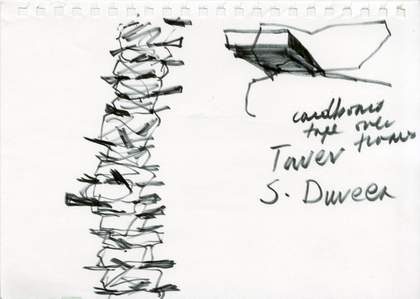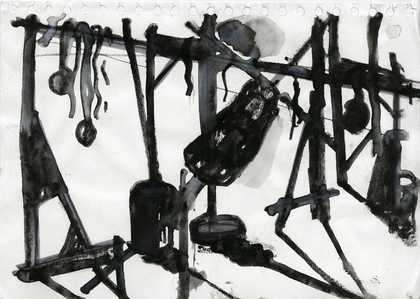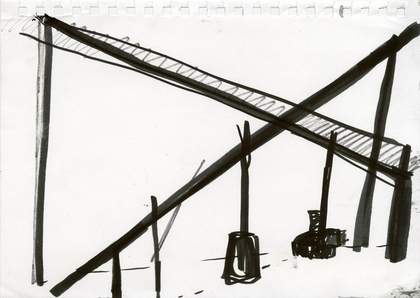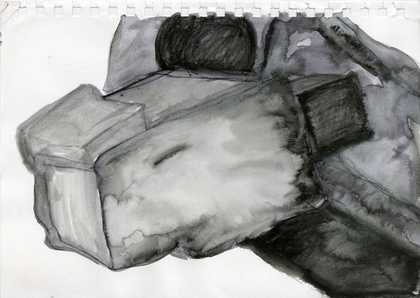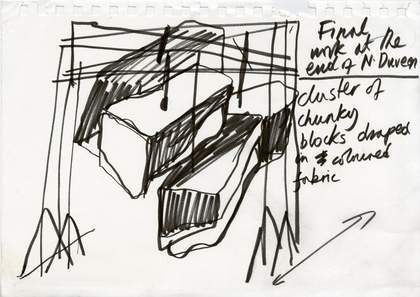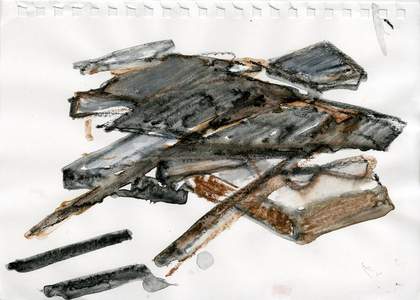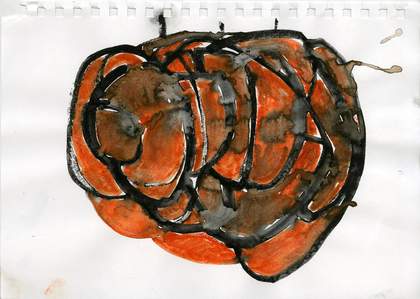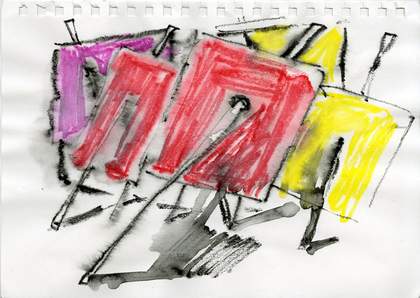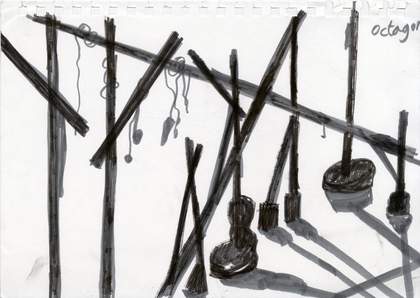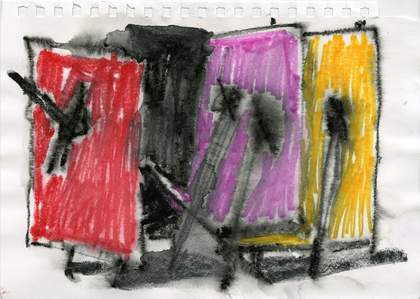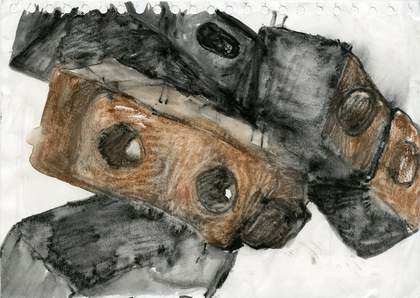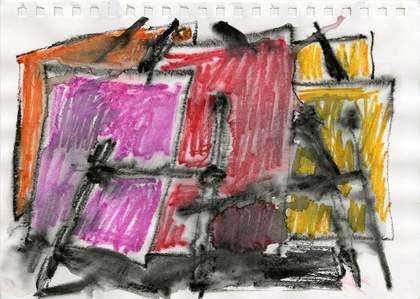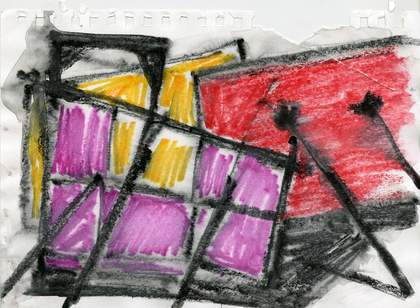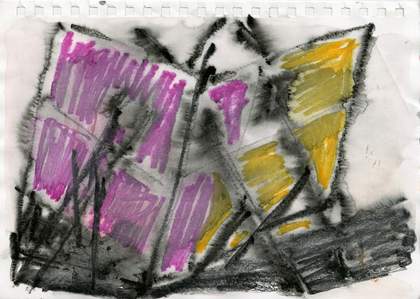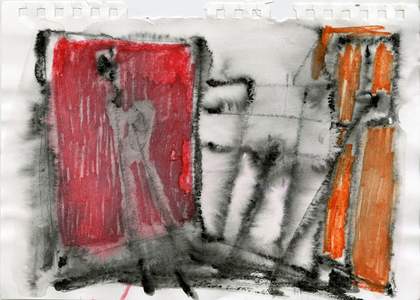The drawings shown here relate to different stages in the planning for Phyllida Barlow’s sculptural installation dock 2014. They represent the wide-ranging nature of Barlow’s sculptural vocabulary and suggest how her ideas for the commission developed over a period of time. Some of these drawings hint at forms recognisable in the final installation in Tate Britain, for example, the blocks hanging in the south Duveen gallery and the hoardings that dramatically divide the Octagon gallery.
Barlow has described her coloured drawings as ‘quick, intimate, open to change and spontaneous decision, and irrational changes of mind and direction’. For her, sketches provide an intensely creative release of ideas and a tool for beginning to map out larger works:
It has now become essential for me to get thoughts about possible works down as directly and as quickly as possible. It is a way of testing out a possible work’s potential for realisation: how it might or could be, as well as what, where, how big or small; as well as asking what kind of object is it, how much space it needs or owns. Then the proposed work begins to evolve on the paper with the pushing and spreading and liquidity of the paint and changes happen. The paper has become a space. The acrylic allows both edges and mass to argue with each other. Images can become blurred gestures, or can be more pronounced and as such be a guide for how to proceed with the physical and material making. These coloured drawings come about in the same way as the smaller works. (‘Phyllida Barlow in Conversation with Sophie Raikes’, in Bad Copies: The Drawings of Phyllida Barlow, Essays on Sculpture, Henry Moore Institute, Leeds, no.65, 2012, pp.34–5.)

